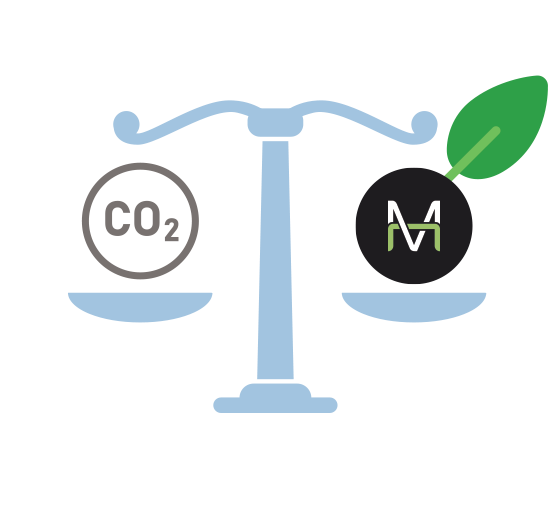CARBON CREDITS




Carbon Credits are a tradable commodity on a volunteer basis. It’s value comes from proven data collection to determine the quantity of carbon sequestered.
Our platform’s algorithm calculates the total amount sequestered by individual farms, our manufactured products, and build structures. Credits harvested are then stored and sold on the voluntary market.
Earth Merchant Farm Network certified partners use our platform to track carbon credits. We handle the entire process from growth, to sales and payment.
Why Farmers Should Choose Earth Merchant
We track carbon sequestered in soil and during the growth phase for farm owners to get credits. Our platform then sells the credits and directly pays the farm.
We also track carbon sequestration in the finished products that continue to sequester carbon, like our OlogyBrick building blocks. These credits can also be sold on the exchange.
We utilize a hybrid of tracking methods such as RFID’s, and Distributed Ledger. Distributed Ledger Technology (DLT) offers a secure and efficient way to create a tamper-proof log of carbon credit activity.
Our technology provides a foundation to create a digital platform that instantly enables trading and settlement of commodities around the globe.
Carbon Emission Units generated from a growth cycle, product or soil is in denominations: 1 tCO2e (one token generated for trade)
Contact us today to get started buying or selling carbon credits with Earth Merchant.
Soil Organic Matter Increases Revenue And Sequestration
Beyond growing and selling hemp, we assist farmers in also sequestering carbon in the soil. Soil Organic Matter (SOM) is carbon stored in the tissues of plants and animals that reside in the soil.
Soil is second largest carbon sink in the world, and one of the most practical. U.S. farmland soil is capable of sequestering 650 million metric tons of carbon dioxide each year. That’s why we help farmers to use Hemp plants to capture carbon from the air and store it.
Improving Carbon Farming Practices Increases Productivity
Highlights of Soil Health Institute’s Economic Analysis on Adopting Soil Health Management Systems (SHMS) Stated that of 100 farms assessed, 97% reported increased crop resilience to extreme weather, and 67% reported a higher yield compared to conventional farming system.
According to the Soil Science Society of America, practicing Soil Health Management Systems improve soil quality, boosting agricultural productivity while reducing atmospheric CO2 concentrations.
SHMS practices involved growing Hemp, reducing tillage, and manure/compost for fertilization. Tillage vaporizes carbon, so the less tillage the better. Manure and compost are both full of carbon.
No-till farming, an especially promising method which leaves the soil intact and crop residues in the field, sequesters an average of 0.3 metric tons of carbon per acre per year.
In Eastern North America, agricultural soil can store about 8 tons of carbon per acre (at a depth of 10 inches) for each 1 percent increase in soil organic matter. So if a farmer has a field of soil at 1 percent organic matter and increases that to 2 percent, she is storing 8 tons of carbon per acre. Payout is currently $6 per ton. That’s $48 per acre. A farmer with 500 acres could increase their profit $24,000!
Conservation Farming Practices Pays!

